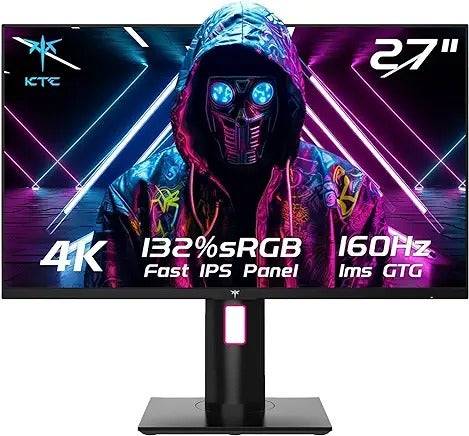The price of top-tier gaming monitors has skyrocketed, especially those boasting OLED panels, large screens, high refresh rates, and sharp resolutions. However, a fantastic selection of affordable monitors remains, offering surprisingly little compromise on image quality and features. Take the Xiaomi G Pro 27i, for instance—a mini-LED, quantum dot marvel available for well under $400. It's my top pick because it rivals far pricier competitors, showcasing the exceptional value achievable on a budget, provided you know where to look.
TL;DR – These Are the Best Budget Gaming Monitors:

Our Top Pick: Xiaomi G Pro 27i Mini-LED Gaming Monitor
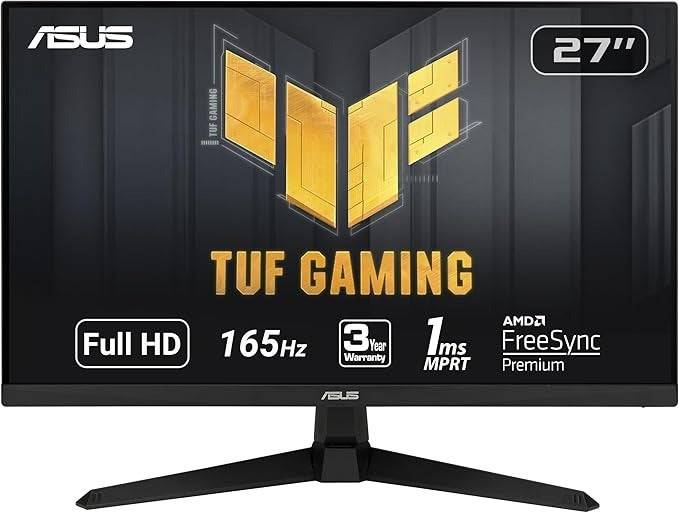 Best 1080p: Asus TUF Gaming VG277Q1A
Best 1080p: Asus TUF Gaming VG277Q1A
 Best 1440p: LG UltraGear 27GN800-B
Best 1440p: LG UltraGear 27GN800-B
Budget gaming monitors may lack certain high-end features, but they still deliver excellent displays for enjoying your gaming PC's capabilities. Even mid-range graphics cards and CPUs can shine on these monitors, as high refresh rate and 4K options are increasingly affordable. While compromises exist (like adjustable stands or extra features like KVM switches), focusing on performance and essential needs reveals exceptional value at every price point.
Not all budget monitors are equal. A sub-$100 monitor might seem like a bargain, but it likely compromises longevity and eye strain. Our picks might cost a bit more, but their robust build quality, superior panels, and gaming features provide a significantly better experience. However, higher-end options are available for those with larger budgets.
Additional contributions by Danielle Abraham, Matthew S. Smith
Looking for deals? Check out the best gaming monitor deals right now.
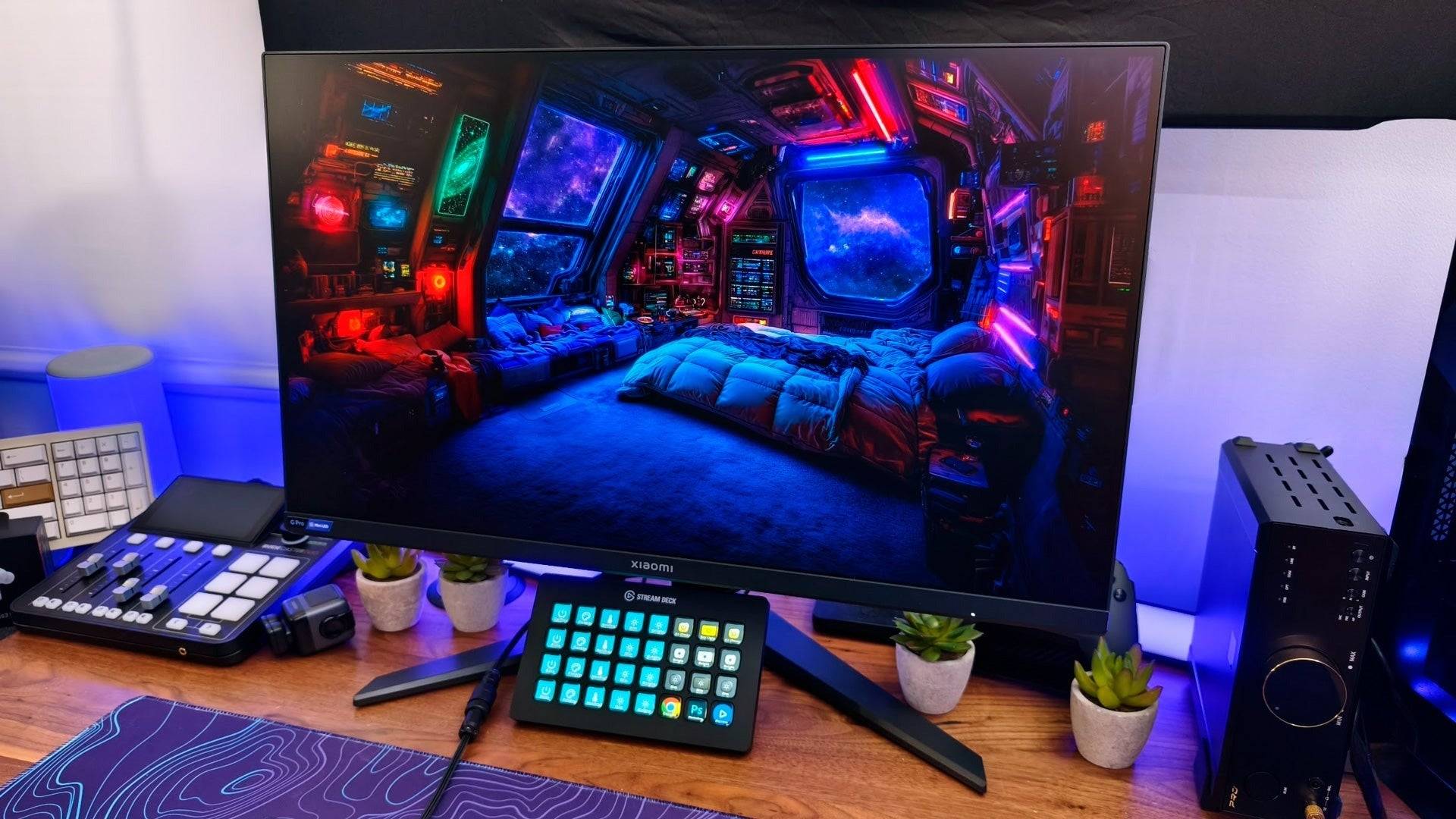
1. Xiaomi G Pro 27i Mini-LED Gaming Monitor
Best Overall Budget Gaming Monitor

Incredible picture quality at an awesome price. See it at Amazon
Product Specifications:
- Screen Size: 27”
- Aspect Ratio: 16:9
- Resolution: 2,560 x 1,440
- Panel type: IPS
- Brightness: 1,000 cd/m2
- Refresh rate: 180Hz
- Response time: 1ms
- Inputs: 2 x DisplayPort 1.4, 2 x HDMI 2.0, 1 x 3.5mm Audio
Pros: High brightness and deep contrast, great color accuracy, outstanding picture quality and HDR, robust 1,152 local dimming zones.
Cons: Bloom on dark grey backgrounds, no USB hub.
The Xiaomi G Pro 27i is a standout performer. Its mini-LED backlight with full array local dimming (FALD) and 1,152 local dimming zones deliver exceptional contrast, minimizing blooming and producing near-OLED image quality at a fraction of the cost. Its 180Hz refresh rate ensures smooth gameplay, and accurate color reproduction makes it suitable for content creation. While lacking a USB hub and only offering HDMI 2.0, its value proposition is undeniable.
2. Asus TUF Gaming VG277Q1A
Best Budget 1080p Gaming Monitor
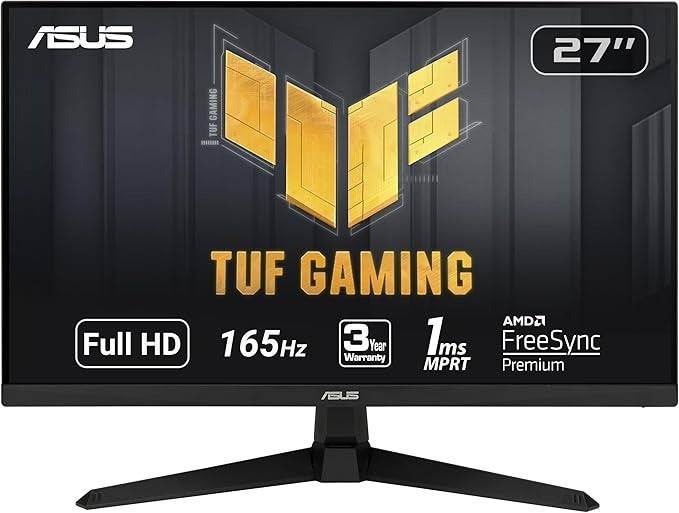
For around $150, this monitor offers great gaming performance with few drawbacks. See it at Amazon
Product Specifications:
- Screen Size: 27”
- Aspect Ratio: 16:9
- Resolution: 1,920 x 1,080
- Panel type: VA, FreeSync Premium, G-Sync Compatible
- Brightness: 350 cd/m2
- Refresh rate: 165Hz
- Response time: 1ms
- Inputs: 2x HDMI 1.4, 1x DisplayPort 1.2, 1 x Audio Jack
Pros: Great colors and impressive contrast, ELMB support for improved motion clarity, VESA support for third-party stands.
Cons: Slightly lower pixel density, no height adjustment.
The Asus TUF Gaming VG277Q1A provides excellent value. Its VA panel delivers deep blacks and wide dynamic range, while its 165Hz refresh rate and 1ms response time ensure smooth, responsive gameplay. Features like ELMB and Shadow Boost enhance the gaming experience. The lack of height adjustment is a minor drawback, easily mitigated with a VESA mount.
3. LG UltraGear 27GN800-B
Best 1440p Budget Gaming Monitor

Get speeds up to 144Hz in 1440p on this monitor that doesn’t forget adaptive sync technology and excellent color accuracy. See it at Amazon See it at Target
Product Specifications:
- Screen Size: 27”
- Aspect Ratio: 16:9
- Resolution: 2,560 x 1,440
- Panel type: IPS FreeSync and G-Sync
- Response time: 1ms
- Inputs: 2x HDMI, 1x DisplayPort
Pros: Solid HDR gaming, great color accuracy.
Cons: Stand isn’t height adjustable.
The LG UltraGear 27GN800-B offers a significant resolution upgrade to 1440p, resulting in sharper visuals. Its 144Hz refresh rate, compatibility with FreeSync and G-Sync, and Low Framerate Compensation ensure smooth, tear-free gameplay. The lack of height adjustment is its main drawback, but VESA mount compatibility offers a solution.
4. KTC H27P22D
Best 4K Budget Gaming Monitor

This gaming monitor offers a fast and fantastic picture on a limited budget. See it at Amazon
Product Specifications:
- Screen Size: 27”
- Aspect Ratio: 16:9
- Resolution: 3,840 x 2,160
- Panel type: IPS FreeSync Premium, G-Sync Compatible
- Brightness: 400 cd/m2
- Refresh rate: 160Hz
- Response time: 1ms
- Inputs: 2 x DisplayPort 1.4, 2 x HDMI 2.1, 1 x 3.5mm Audio
Pros: Sharp 4K screen, great for consoles thanks to HDMI 2.1 connectivity, fast refresh rate, excellent value overall.
Cons: No USB connectivity, not factory calibrated.
The KTC H27P22D demonstrates the advancements in budget 4K gaming monitors. Its 160Hz refresh rate, support for FreeSync Premium and G-Sync, and dual HDMI 2.1 ports make it ideal for both PC and console gaming. While not factory calibrated and lacking a USB hub, its overall performance and affordability are impressive.
5. Dell S3422DWG
Best Ultrawide Budget Gaming Monitor
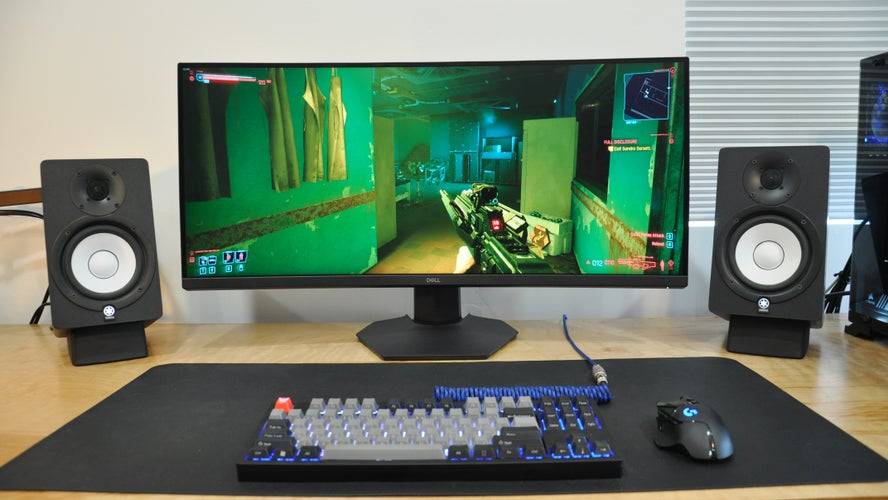





Immerse yourself in the action with a cheap, ultrawide curved monitor delivering a 1440p/144Hz refresh rate. See it at Amazon See it at Dell
Product Specifications:
- Screen Size: 34”
- Aspect Ratio: 21:9
- Resolution: 3,440 x 1,440
- Panel type: VA FreeSync
- Brightness: 400 cd/m2
- Refresh rate: 144Hz
- Response time: 1ms
- Inputs: 2x HDMI, 1x DisplayPort
Pros: Great contrast, immersive wide, curved display.
Cons: Minor ghosting.
The Dell S3422DWG offers an immersive ultrawide experience at a budget-friendly price. Its curved VA panel delivers vibrant visuals, while the 144Hz refresh rate and FreeSync support ensure smooth gameplay. Minor ghosting is a minor drawback.
How Much Should You Spend on a Gaming Monitor?
The $200-$300 range is a sweet spot for budget gaming monitors. Cheaper options often compromise quality, while a $100 monitor might not last. Knowing what features are most important helps make informed compromises.
Factors to Consider: Resolution, Refresh Rate, Panel Types, Screen Size
Budget gamers have more choices than ever, but compromises are still necessary. Higher resolution often means lower refresh rates and vice versa. 1080p remains the standard for budget displays, offering good performance even on less powerful hardware. 1440p is a valuable upgrade if your budget allows, offering higher pixel density on a 27" screen than a 48" 4K TV. 4K is attainable on a budget but usually requires compromises in brightness or screen size and demands more powerful hardware.
Refresh rates typically range from 60Hz to 240Hz, with 144Hz being a solid all-around choice and 240Hz ideal for competitive gaming. Note that maximum refresh rates may not be supported by all inputs; DisplayPort is generally preferred for high refresh rates. Panel technology is crucial: IPS offers better motion clarity and color accuracy, while VA provides superior contrast. Screen size is a matter of personal preference and desk space; 27" is a good all-around size, while 24" is ideal for competitive gaming and 32" and up offer greater immersion.
G-Sync or FreeSync compatibility is recommended depending on your graphics card. While many budget monitors advertise HDR, the low brightness (typically 400 nits) limits its effectiveness.
Budget Gaming Monitor FAQs
What is the best type of panel?
Budget monitors typically use IPS or VA panels. The Xiaomi G Pro 27i (with its mini-LED backlight) surpasses both. Otherwise, IPS excels in response time and color accuracy, while VA offers better contrast. The best choice depends on your priorities.
When are gaming monitors most affordable?
Shopping events like Amazon Prime Day and Black Friday, along with Back to School sales, offer the best deals. Retailers often lower prices on older models to make way for new releases.
What size gaming monitor should I get for gaming?
Consider available space, resolution, and pixel density. 24" is suitable for 1080p, 27-32" for 1440p, and at least 27" for 4K. Avoid 1080p monitors larger than 27" due to the screen door effect.

